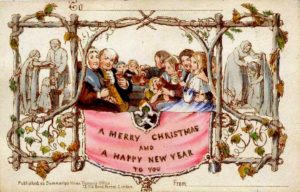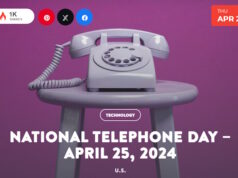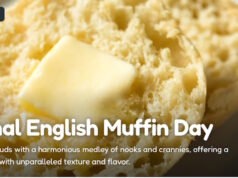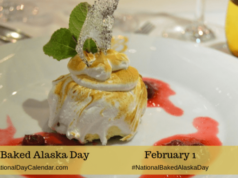
Way back in 1843, the first commercial Christmas card was created in England by Sir Henry Cole, a civil servant who was responsible for the idea of sending greetings scribbled into the now familiar cards we get around the season of good cheer.

Christmas Card Day honors its inventor on the 9th of December. The first ever commercial Christmas card showed a family raising a toast, and in the following year’s designs showing flowers or depicting the promise of spring were favored. Lithograph firm Prang and Mayer started selling their whimsical Christmas cards, often featuring children or cartoon animals, across the pond to America in 1874. By 1880, Prang and Mayer were producing a massive five million cards a year.
- With so many designs, shapes and sizes, some Christmas cards have become collector’s items which have been known to shift at a pretty penny at auction. One of the world’s first cards, commissioned by Cole and produced by J. C. Horsley, saw the hammer come down at £22,250 in 2001.
- Another one of Horsley’s cards sold for almost £9000 in 2005 – and if you want to see a big collection of these coveted cards you can drop by the British Museum to see Queen Mary’s early 1900s collection.
- Early Christmas cards rarely showed the religious or wintry scenes we see today. Instead they tended to be flowers, fairies and exotic designs.
- 45% of all cards sent are for Christmas but only 15% are bought by men.
- According to the Greeting Card Association, an industry trade organization, Americans purchased some 2 billion individual and boxed Christmas cards in 2011.
- And while you’ve undoubtedly heard of the biggest greeting card manufacturers, such as Hallmark, the card industry contains far more players than you might imagine. The Greeting Card Association says more than 3,000 companies publish greeting cards in the United States.
- The association estimates annual retail sales of greeting cards at $7.5 billion in the U.S., with about 50 percent comprised of seasonal cards (Christmas, Valentine’s Day, Mother’s Day, etc.). And Christmas cards account for about 60 percent of those season sales, meaning about $2.25 billion in annual Christmas card sales.
- The White House Sends More Than 1 Million Annual Holiday Cards. President Calvin Coolidge sent out the first official White House Christmas greeting to the nation in 1927, penning a card on White House stationary that was reproduced in newspapers around the country.
- President Dwight D. Eisenhower began the practice of mailing out cards to congressmen, ambassadors and other dignitaries his first year in office in 1953.
- For almost 20 years, presidents sent out from a few hundred to a few thousand cards. Then, Richard Nixon seized upon the idea that there might not be a more unique way to thank his political friends and contributors than a White House card.
- According to Mary Evans Seeley’s book, Season’s Greetings from the White House: The Collection of Presidential Christmas Cards, Messages and Gifts, Nixon sent out around 40,000 annual holiday season cards. And the practice has exploded from there. The George W. Bush White House issued some 1.5 million holiday cards.
- When electronic greeting cards popped up a few years ago, offering free, instantaneous delivery, some analysts predicted a quick demise for the traditional greeting card industry. Not so fast. Hallmark Cards Inc., which offers products in 30 different languages in 100 different countries around the world, reported total revenue of $4.1 billion in 2011
- The holidays have always struggled to balance genuine sentiment with commercial exploitation, so perhaps it’s fitting the very first Christmas card made in the U.S. was a mini-billboard for a department store. Issued between 1850 and 1852, the card’s seasonal illustrations were buttoned by a mention of Pease’s, a “general variety” store in Albany, New York.
- The Hall Brothers, who founded what would later be known as Hallmark in 1910, began issuing cards that were folded down the middle and stuffed into envelopes. The reason? People were having a hard time expressing all of their thoughts on the relatively small cards from other manufacturers. Hallmark virtually doubled the writing real estate, and soon became synonymous with the holiday market.
- Infographic by Moo.com (Click on the graphic for a closer look)













